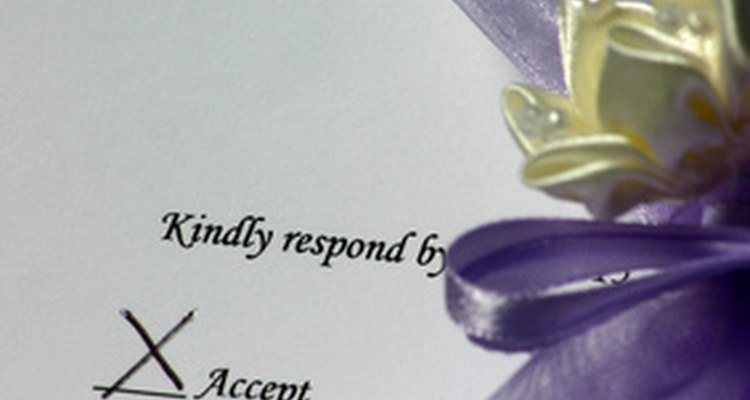
The saying "It's all in the details" certainly applies to weddings. It's all the little things that come together to make your day complete, and invitations--for many couples--are a big part of the whole picture. If you choose to use formal invitations for your wedding, there are a number of etiquette rules to follow. You'll have to consider things such as whether a woman uses her maiden name, how to address doctors and judges, and how you should list children's names.
Significance
If you decide to go with formal invitations, you'll have both outer and inner enevlopes to address, and you'll want to make sure you do it correctly. (You may even find it fun, in our mostly-informal society, to put words like "The Honorable" on an envelope in near-perfect calligraphy.)
As a Toronto wedding invitation site states, invitations "are the first way to make an impression on your guests." And you know what they say about first impressions: you (hopefully, in this case) never get another chance to make them.
Time Frame
The general rule of thumb is that you should mail your invitations six to eight weeks before the big day. This gives your guests, particularly those coming from out of town, plenty of time to take off work, make flight and hotel reservations and arrange babysitters, if necessary.
Planning a Christmas wedding or a destination ceremony? Stick to the eight-week rule. "If your wedding is in a far-away location or over a holiday weekend, it’s important to mail the invitations early so guests have plenty of time to make arrangements," states WeddingWire.com.
Considerations
There are etiquette rules for addressing each envelope, so you'll want to consider several questions before you put pen to paper--such as: If it's a couple, are they married, or not married but living together? Do they have children, and are the children invited? Do you want to allow everyone who is single to bring a guest? Are there any same-sex couples?
The answers to these questions, and others, will determine how you address formal invitations.
Wording for Single Guests
According to the paper company Southworth, for single guests, you should use the person's full name, preceded by Miss., Ms., Mrs. or Mr., on the outer envelope, and use the same salutation, with only the last name, and the phrase "and Guest," if you're allowing guests, on the inner envelope.
For instance, for a divorced woman who uses her married name, you would write "Mrs. Susan Smith" on the outer envelope and "Mrs. Smith and Guest" on the inner. For a single woman over 18 or a divorced woman who uses her maiden name, address the outer envelope as "Miss (or Ms.) Sara Foster" and the inner as "Miss (or Ms.) Foster and Guest."
Wording for Couples
According to Southworth, for married couples, address the invitation to, for instance, "Mr. and Mrs. Joe Smith," and put simply "Mr. and Mrs. Smith" on the inner envelope.
For married couples in which the woman uses her maiden name, use the full names for each person on the outer envelope and the last names on the inner; for instance, "Mr. Tim Stevens/Mrs. Becky Peters" on the outer and "Mr. Stevens/Mrs. Parker" on the inner. (The "/" indicates a separate line.)
For unmarried couples who do not live together, address the invite to the person to whom who are closest, and put both peoples' names only on the inner envelope.
For unmarried couples who live together, write both names on the outer envelope, alphabetically and on separate lines; do not write "and" in between the names. Also put both names on the inner envelope.
For same-gender couples, according to Southworth, list the full names alphabetically on the outer envelope (no "and" in between, and put the names on separate lines.) Put both names on the inner envelope; for example, "Miss Chandler/Miss Byers."
Wording for Professional Titles
According to Southworth, you should address judges' invitations to "The Honorable," but use "Judge" on the inner envelope.
For medical doctors, spell out "Doctor" on both envelopes. If both people in a married couple are medical doctors, write "Doctors" on the outer envelope and "The Doctors" on the inner; for instance, "Doctors Jim and Mary Smith" on the outer and "The Doctors Smith" on the inner.
For someone with a Ph.D., use "Dr." on both envelopes, according to Southworth.
For members of the clergy, use "The Reverend" or the appropriate title on both envelopes.
For military officers, use the correct title on both envelopes, states Southworth. If it is a married couple and the man is active or retired military, address the outer envelope like this: "Captain and Mrs. Jerry Jones" and the inner envelope as "Captain and Mrs. Jones."
For an unmarried couple in which the woman is active or retired military, address the outer envelope in this way: "Lieutenant Cindy Jones, U.S. Army/Mr. Stan Kellers" and the inner envelope as "Lieutenant Jones/Mr. Kellers."
Wording for Children
Children who are at least 18 years old should get their own invitation, even if living with their parents who also are invited, says Southworth.
According to TheKnot.com, adult children living in the same household can receive a joint invitation, with each of their names written in alphabetical order on separate lines on the outer envelope.
According to TheKnot.com, for minor children, include their first names on the inner envelope below their parents' names--or simply write "and Family."
Related Articles

The Etiquette for Addressing Wedding ...
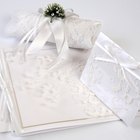
How to Address Invitations With No ...
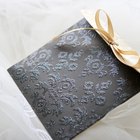
Wedding Etiquette for Name Order

Thank You Note Etiquette for Envelopes

How Do You Address Wedding Invitations ...

Etiquette for Save the Date Envelopes

How to Address Place Cards for Weddings
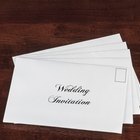
How to Address Informal Wedding ...

How to Address Envelopes for Military ...

How to Address Bridal Shower Invitations

Etiquette on Addressing Guests in ...

How to Address an Envelope for a Family ...

Etiquette for Addressing Wedding ...

How to Address an Invitation to a Pastor

The Standard Size for Wedding ...
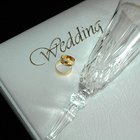
Save the Date Postcard Etiquette

How to Write a Wedding Invitation

Engagement Etiquette for Parents

Do the Groom's Parents or Bride's ...

Proper Way to Address a Party ...
References
Writer Bio
Following five years as a newspaper reporter, Mackenzie White now works as a freelance writer when not completing her novel or chasing after her toddler son. White has bachelor's degrees in journalism/English and creative writing from Ashland University. As a reporter, she received several awards for her feature articles. Also a photographer, White recently started her own photography business.
Photo Credits
accepting the inviye image by Bettina Baumgartner from Fotolia.com